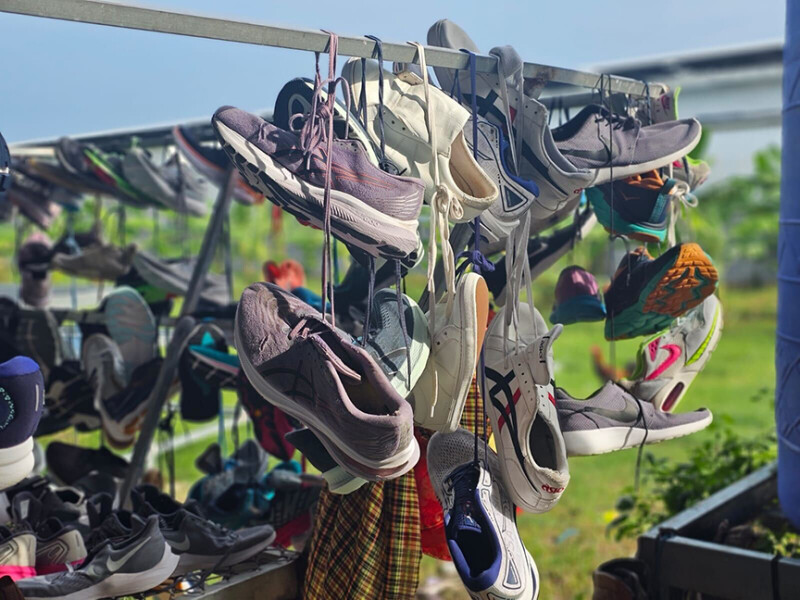Just a few years ago it was impossible to discuss the future of anything without using the word “uncertainty” several times. In hindsight, we’ve not only survived amid that uncertainty, but thrived. Three consecutive years of growth have further compounded the gains that were kick-started in 2020. Based on the data, the industry has grown by 19 percent since 2022. In fact, the only year-over-year decrease in that entire period happened this past January.
From the outside, run specialty stores appear to be in great shape. Yet not all owners would agree that it’s quite so rosy. Are those simply “glass-half-empty” perspectives that fly in the face of the data?
I do not think so. Year-over-year gains have been smaller in 2024 than in the past, signifying there are underlying factors that are causes for concern in our industry. The trends we see as we dig further will not set off any alarms, but they do point to the issues that must be solved to continue growing in the future.
The story seems to be composed of three elements. We’ll dig deeper into the data behind these trends and others during the Route Map session at The Running Event. Until November 19, though, here’s a sneak peek.
Let’s start at the top — literally.
Uniformity in Specialty
I remember the first time I saw a pair of Hokas. Not on the wall, mind you — just a single box mailed to the store. My first reaction? They looked ridiculous! No way these were catching on.
That was just over a decade ago. Shoes like the Clifton and the Bondi are now among the household names of the athletic shoe world. And they’re even considered fashionable! According to Google Trends, “Hoka” surpassed “Yeezy” in search volume during the month of August. My collegiate self would simply not believe it.
The explosive rise of Hoka is just one component of the bigger story: Together, Hoka and (the more established) Brooks now make up just over 50 percent of shoe revenue in run specialty.
Think about that for a minute: Despite the wide variety they see, the next customer who walks in your doors is more likely to ask for and buy a Hoka or Brooks shoe than anything else on the wall combined.
The same consolidation at the top for shoes is true in other categories, too. Feetures is far and away the top brand purchased in a sock industry that is showing five percent growth over 2023. In insoles, it’s Currex – another brand that has really come on in just the last 10 years – who now owns the top spot.
The incredible growth of brands like Hoka and Currex showcase the very best of run specialty. Brands pushed the limits to create something fresh and innovative for customers. Retail stores went beyond giving them a place on the wall, actively introducing customers to a product they likely had not heard of. Everybody won here: Customers are happy and revenue is up. It is a great example that shows how both the brand and the store should be proud of the success they’ve built together.
On the other hand, that very same growth has been so rapid that it led to consolidation at the top. Run specialty stores have carved their niche in pioneering a way for customers to learn about high-quality products and brands they will love, but that they may not have considered otherwise. This is what concerns owners for the health of our industry in the long run: The more market share is collected by just a few brands, the more commoditized the products become — and the more difficult it is to justify carrying the range of inventory that got us here.
I’m hardly criticizing today’s top brands — my family certainly purchases them. My point is that run specialty thrives when the ebb and flow of demand creates a healthy balance of products.
How long will it be before the next wave of disruptors (whether established or start-ups) shakes up today’s status quo? Now is a great time to re-familiarize yourself with your store’s lineup and trends to get a jump on what the next novel products might be for your customers.
Retailer and Brand Tension
It’s no secret that retailers and brands have not been on the same page lately. Both sides feel they are not getting the attention they deserve from the other.
Retailers often say that their small volume account is not prioritized by brands. Meanwhile, brands have a version of the same story: Unless you’re one of the very top brands (see above), it feels increasingly difficult to get ahold of retailers. Of course, the elephant in the room is the expanding DTC business. Retailers feel increasingly threatened by this — we’ll save that topic for another article.
Put it all together and when it comes to the relationship between store owner and sales rep, conversations can seem contentious and less collaborative than they were in the good ol’ days. That’s unfortunate because both sales rep and store owner should be on the same team. Not only does a rep have no control over DTC strategy, they also share the owner’s end goal of selling as many products in a store as possible.
Another point of tension can arise when reps encourage retailers to share the store’s product sales (not customer) data for their brand. Proactive reps can then take a hands-on approach to managing inventory, preventing stockouts and selling more shoes in-store. It’s a win-win for account service and data sharing has been on the rise over the last several years because of it.
On a given week, “better service” could mean more communication from your rep, or fewer emails if there is no news to share. Of course, data is only valuable when it is applied. If a retailer does not see it in action, it will question whether the data is actually being used to manage their account at all.
I hope that I can ease those tensions a bit. In talking with reps at conferences and meetings, they want to help and real data shows the shared incentive does play out in a way that floats all ships.
Reps are highly active in managing accounts when they have access to product sales and inventory data. Based on user data for UQ Cadence, reports designed specifically for handling individual accounts are viewed almost 100 times per day. And that says nothing about how long they may spend on that page. In the case of UQ Cadence, it’s likely that one view includes clicking on several accounts, then reviewing and coming up with a strategy for each.
All of this is encouraging for those who feel the collaborative spirit between brands and retailers is on the rocks. The data proves that sales reps are indeed eager to help. However, the truth is that it doesn’t matter whether a rep is using a report or not. What matters is making sure the retailers receive better support because of it and feel a difference.
As the industry continues to grow, inventory management is not a challenge that is going away. We expect data sharing to continue expanding in the coming years as retailers require more proactive service from their sales reps. And as those reps deliver improved service, this has the potential to strengthen the retailer-brand relationship over the long-term as well.
Price Sensitivity
The days of finding the season’s newest shoes for $100 are over. On second thought, those days have been over for years. I’d say it’s time for an update — the days of finding popular running shoes for $130 are numbered.
The data is clear: In the last three years, the average price of a pair of shoes has grown from $133.78 to $138.41. That increase of five dollars is very significant when you consider that today only about 15 percent of shoes sold are for $130 or less.
Inflation is happening everywhere, yet our customers have not visibly revolted. Despite what basic economics would have you believe, the number of shoe units sold has still grown in each of those years. Ditto for the number of transactions. What gives?
Hidden in those figures is the real gem of the story: The time between purchases has changed dramatically. In 2022, customers who returned to the same store to buy another pair of shoes did so every 278 days. It has been rising ever since and today that time period has stretched to over 340 days between purchases.
There are also other, more subtle clues that show how customers are more price sensitive now than a few years ago. Average Units Per Transaction has remained steady over the years between 2.25 and 2.30, with customers increasingly choosing between socks and insoles as their “second item.” A look at ratios shows that the increase in insoles corresponds directly to the decrease in sock purchases, even though socks are still the much more likely choice of the two.
What is the reason? There are plenty of theories:
• Customers are running them “until the wheels fall off” and well beyond their intended life.
• Customers can find the same shoe at a better price elsewhere.
• Customers choose to buy DTC, either due to a stock-out or color preference.
All of these theories are plausible and the combination of them is most likely. In every case, decreased purchasing power unsurprisingly influences how often customers come into your store and how much they will buy when they do.
The Road Ahead
So, is the glass half full, or is it half empty? As my friends know, I’ll be the first to tell you that it’s both.
There is absolutely reason to be bullish on the future of run specialty. There are absolutely hurdles that still exist, too and the industry’s ability to work through those issues will determine its ceiling.
As we look forward to 2025, I am optimistic. The years ahead will require collaboration. They will require persistence. They will require creativity. Fortunately, those are the things that runners are known for.






